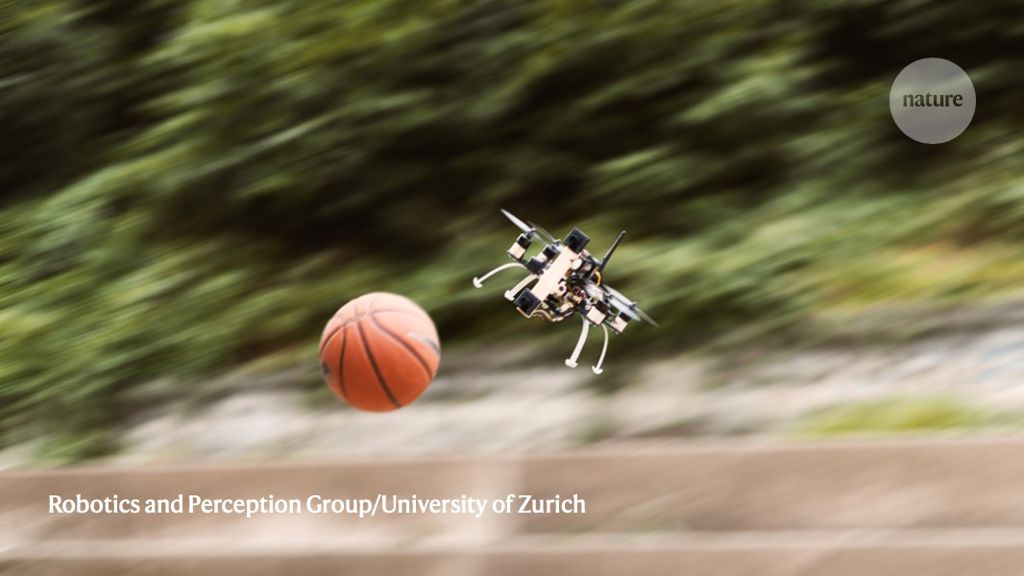A bio-inspired sensor called an event camera helps a drone to avoid a collision. Credit: Robotics and Perception Group/University of Zurich
Technology
Drones fitted with a type of motion-detecting camera can dodge obstacles ten times faster than current drones equipped with conventional cameras.
Self-flying drones have commercial potential for capturing aerial imagery and delivering packages. But their slow reaction time makes them vulnerable to collisions with birds and other items. Current drones capture images from a camera and use algorithms to identify moving objects, a process that can take several hundredths of a second — and leaves the drones vulnerable to collisions.
Davide Falanga and his colleagues at the University of Zurich in Switzerland fitted four-rotor drones with devices called event cameras. Instead of recording images or video frames, an event camera outputs a stream of data points triggered whenever a camera pixel detects a change in environmental brightness; such changes correspond to movement or other disturbances in the surroundings. The team’s algorithm also adjusted for the drone’s own movements.
The researchers tested the drone’s reaction time by throwing balls at it. The drone could perceive and begin to dodge the ball in just 3.5 milliseconds, significantly faster than drones using conventional cameras and image analysis.

